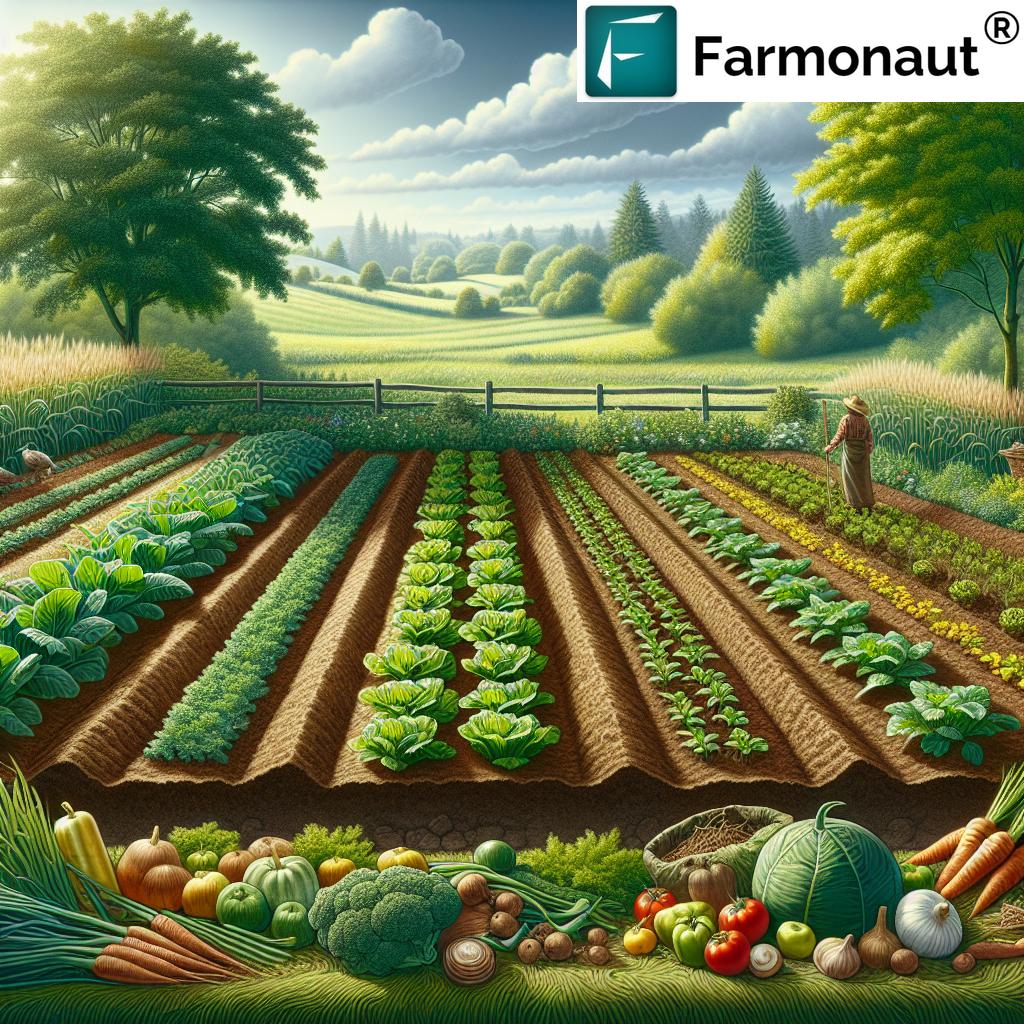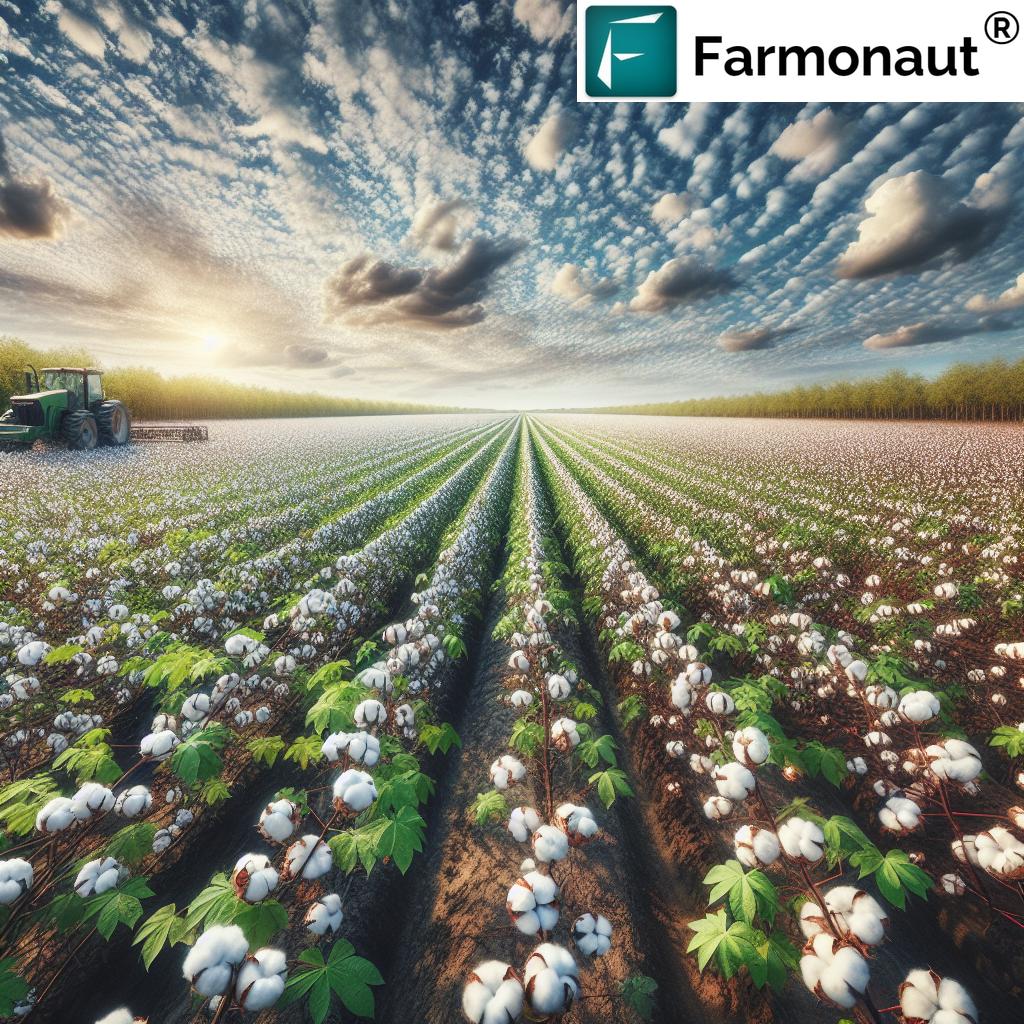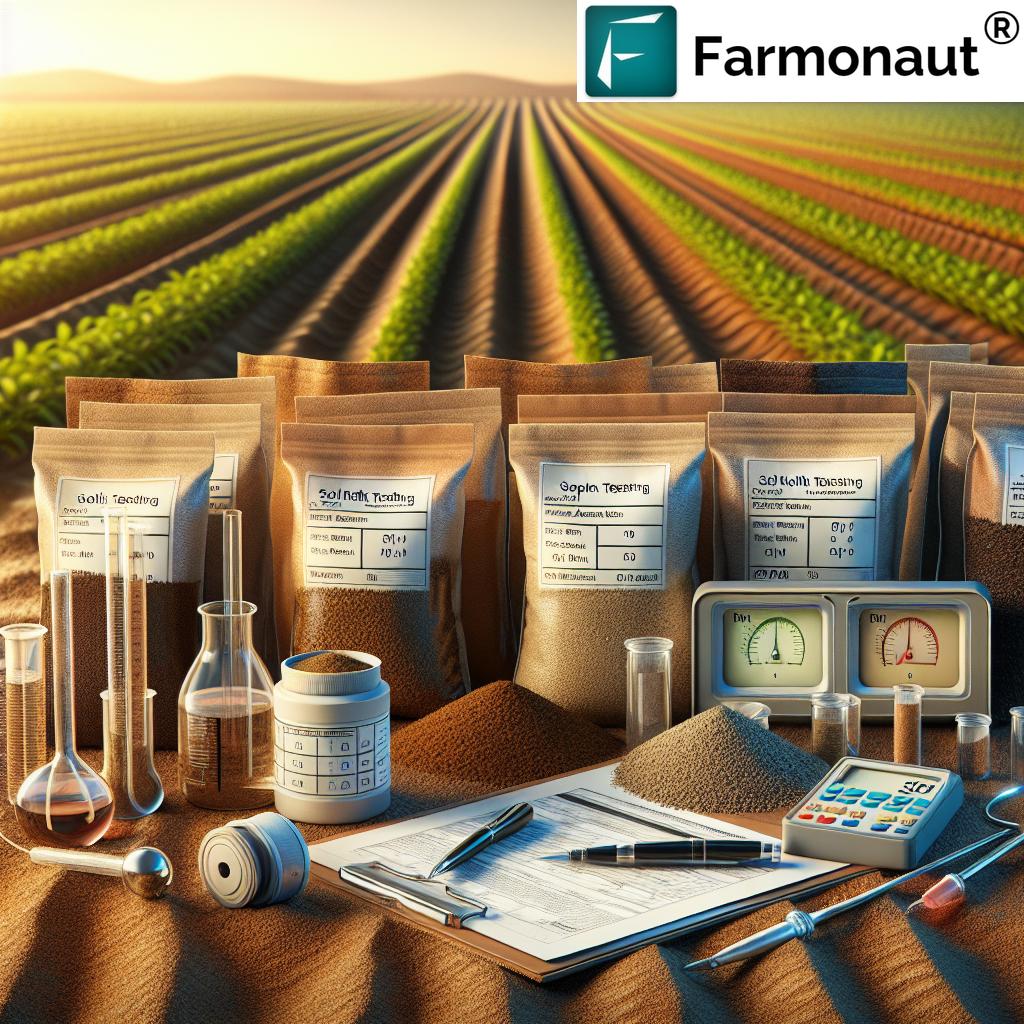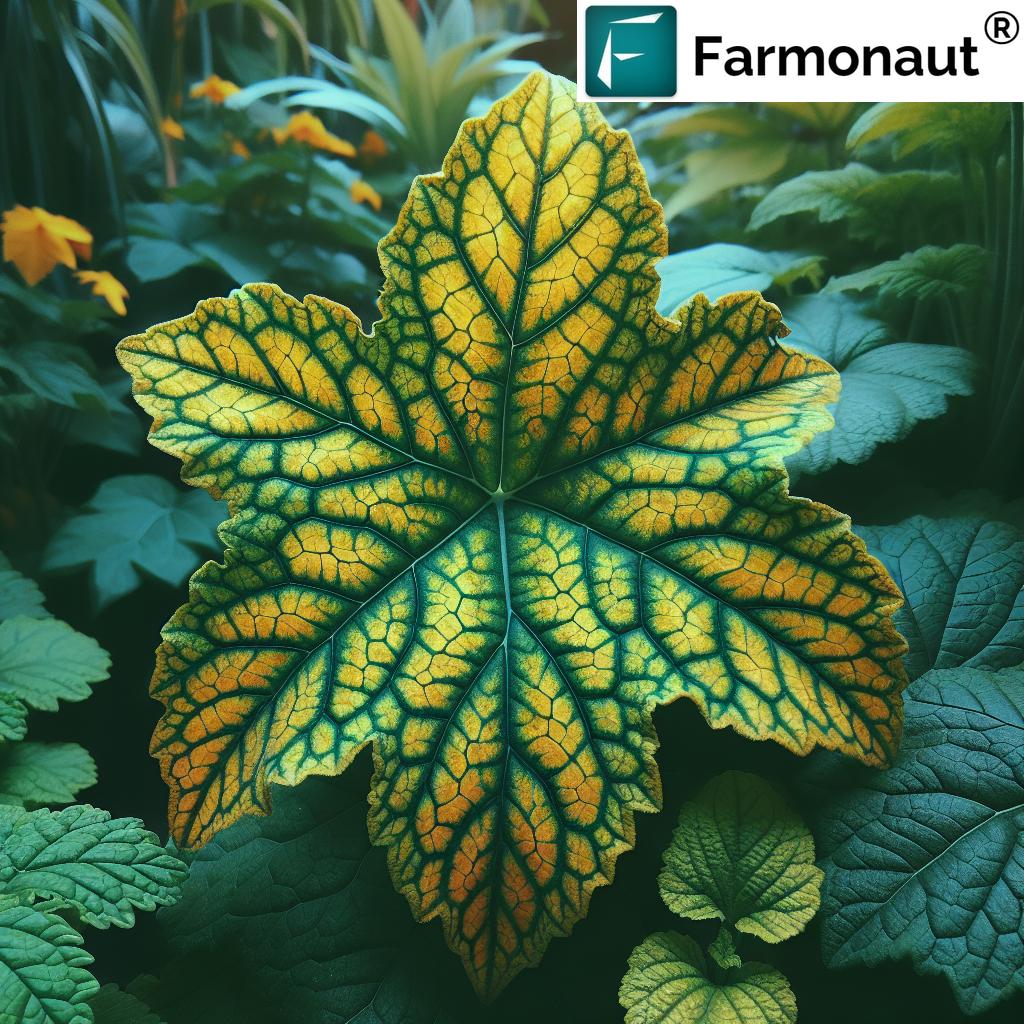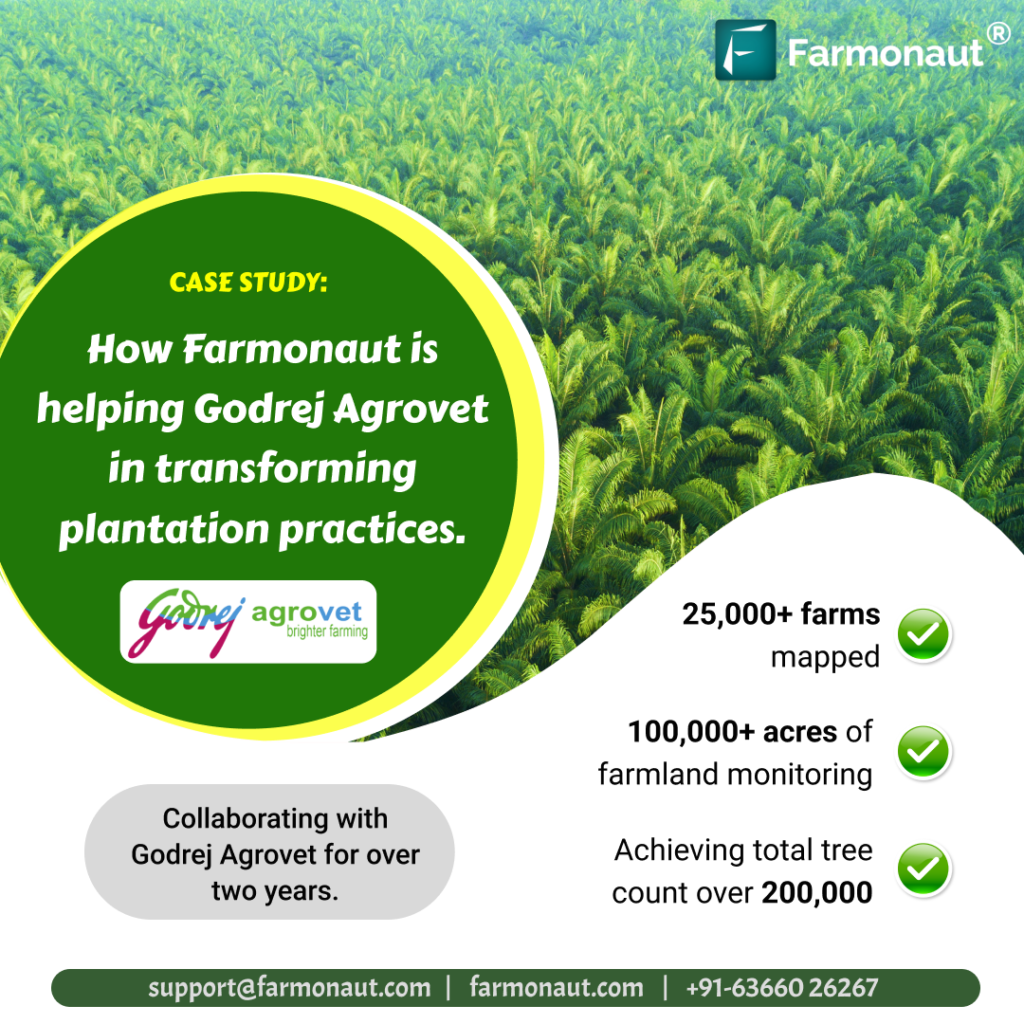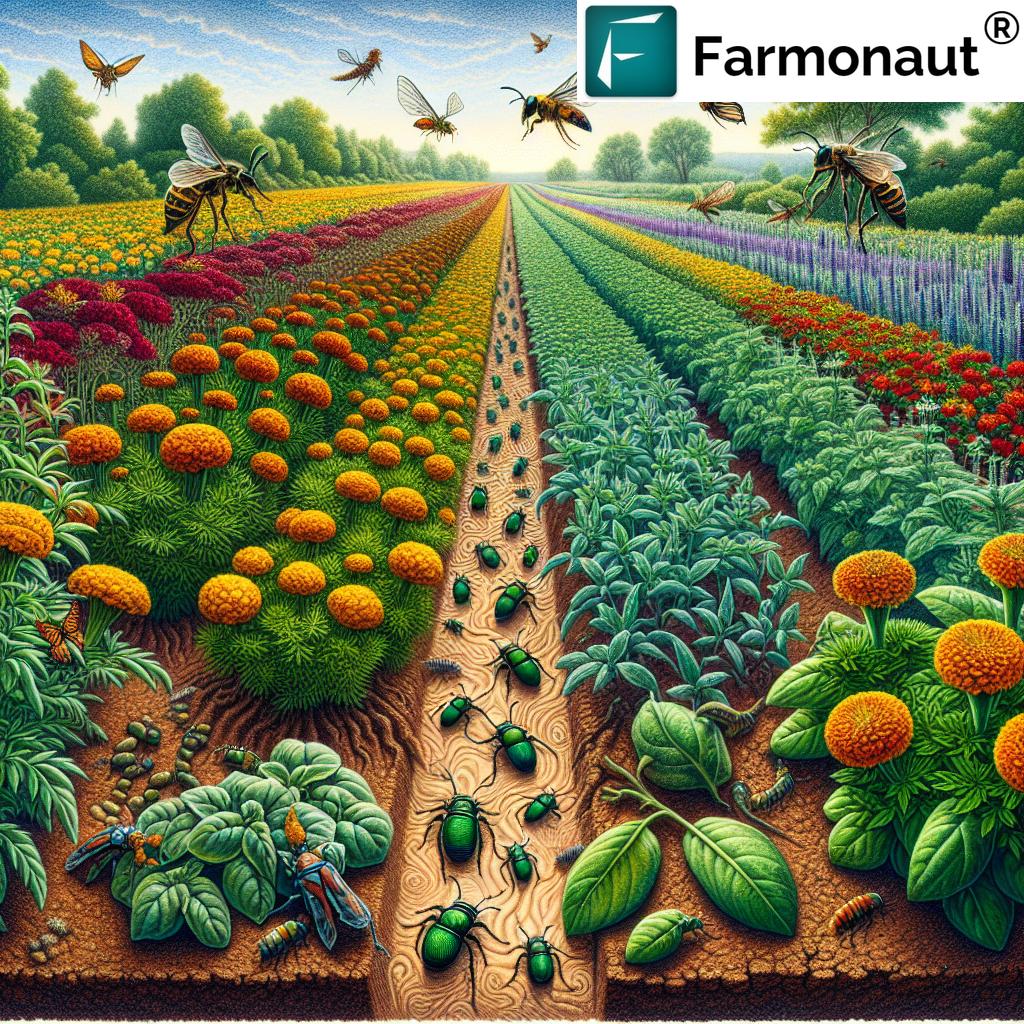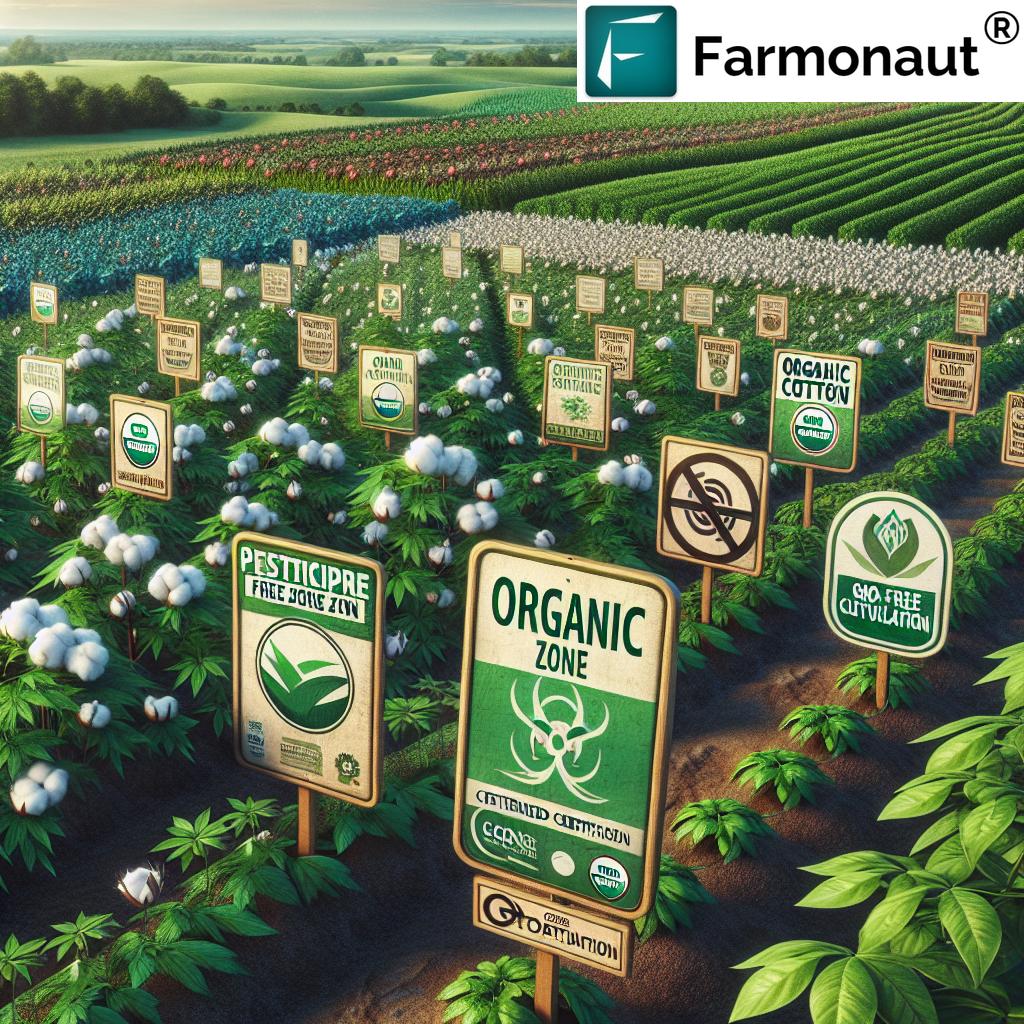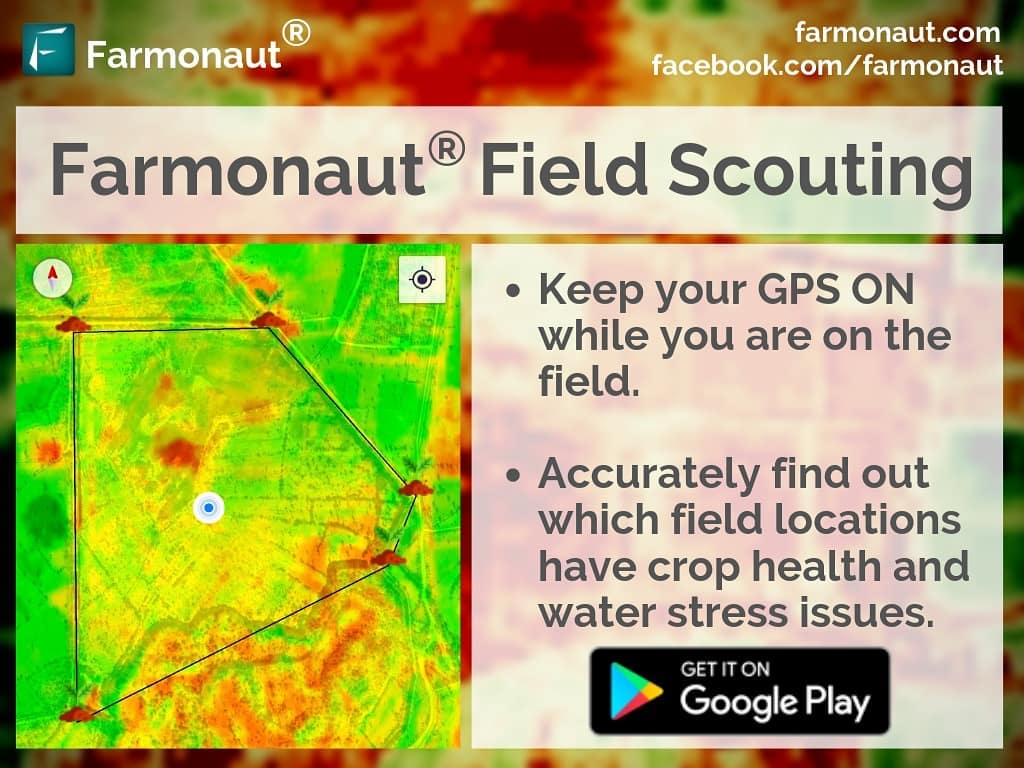Organic Farming: 7 Powerful Practices for Sustainable Yields
Table of Contents
- What is Organic Farming?
- Understanding the Principles of Organic Farming
- 7 Powerful Practices for Sustainable Yields
- Environmental Benefits of Organic Farming
- Organic Pest Control Methods
- Organic Food Health Benefits
- Economic Considerations & Challenges in Organic Farming
- How Farmonaut Empowers Sustainable Organic Farming
- Comparison: Organic vs. Conventional Farming Practices
- The Future of Organic Farming: Innovations & Outlook
- Frequently Asked Questions (FAQ)
“Organic farming uses 30-50% less energy per unit of crop compared to conventional farming methods.”
What is Organic Farming?
Organic farming is an agricultural method that excludes the use of synthetic fertilizers, chemical pesticides, and genetically modified organisms (GMOs). Instead, it emphasizes natural processes, ecological balance, and biodiversity to cultivate crops and raise livestock.
With roots stretching back centuries, modern organic farming has evolved into a global movement aimed at producing healthy food while enhancing environmental sustainability.
Today, the organic products market is expanding rapidly. By 2022, its value reached roughly $150 billion, with North America and Europe accounting for over 90% of global sales. This robust growth reflects increasing consumer demand for products grown and processed under environmentally sound guidelines.
Why Choose Organic Farming?
- Protects human health by reducing exposure to harmful chemicals
- Promotes soil fertility and water quality through natural amendments
- Builds resilient ecosystems and encourages biodiversity
- Supports local economies with sustainable, labor-friendly practices
Key Terms:
- Organic products: Crops or animal products certified as grown without synthetic inputs
- Synthetic fertilizers/pesticides: Chemically manufactured inputs detrimental to soil, water, and food safety
- Ecological balance: The harmonious functioning of natural systems, cycles, and organisms
Monitor and reduce your farm’s environmental impact with Farmonaut’s Carbon Footprinting Tool. Get real-time emission data and move towards eco-friendly compliance.
Understanding the Principles of Organic Farming
At the heart of every organic farming approach lies a commitment to four core principles:
-
Health:
We strive to sustain and enhance the health of soil, plants, animals, and humans.
Healthy soil forms the foundation for nutrient-rich crops and livestock. -
Ecology:
Organic agriculture seeks to work with natural systems, organisms, and cycles—not against them.
Our goal is to maintain ecological balance and promote biodiversity. -
Fairness:
We emphasize fair relationships among all participants—farmers, consumers, workers, and the environment. -
Care:
Organic methods require responsibility and caution in safeguarding the health and well-being of current and future generations.
Implementing Organic Principles in Practice
- Organic crop rotation to improve soil structure and manage pests
- Using compost and green manure to increase soil fertility naturally
- Adopting organic pest control methods—biological and mechanical
- Avoiding synthetic materials and focusing on naturally-derived substances
We, as organic farmers, must consistently evaluate and adapt our methods to stay aligned with these guiding principles, ensuring our food production remains healthy and sustainable.
Leverage satellite data for farm management via Farmonaut’s API Platform. For technical integration, visit the Developer Docs.
7 Powerful Practices for Sustainable Yields in Organic Farming
1. Organic Crop Rotation
Organic crop rotation is an age-old practice that involves alternating the type of crops grown on a particular field across different seasons. By breaking pest and disease cycles, it helps prevent soil nutrient depletion, improves soil structure, and enhances fertility.
- Legume crops (e.g., beans, clover) add nitrogen naturally
- Reduces the buildup of crop-specific pests
- Promotes soil biodiversity and aeration
2. Composting and Green Manure Use
Composting transforms organic waste into a fertile soil amendment, returning nutrients and boosting the organic matter content. Green manure involves growing cover crops (like clover or vetch), then tilling them into the soil to enhance fertility and structure.
- Improves water retention and root development
- Encourages beneficial soil organisms
- Reduces input costs by recycling farm waste
3. Biological Pest Control
Instead of synthetic pesticides, we rely on biological pest control: introducing or encouraging natural predators or beneficial insects—such as ladybugs or predatory wasps—that help manage pest populations.
- Maintains ecological balance in the field
- Prevents chemical residues on crops and in soil
- Reduces the risk of pest resistance
4. Cover Cropping
Planting cover crops (such as rye, oats, or cowpea) during off-seasons or between main crop cycles protects and enriches soil. These plants minimize erosion, suppress weeds, and foster soil fertility.
- Reduces soil erosion and moisture loss
- Improves nutrient cycling
- Enhances overall soil structure
5. Use of Natural Fertilizers
Organic farming relies on natural fertilizers such as compost, manure, bone meal, and rock phosphate to supplement soil nutrients. These sources break down gradually, naturally enriching the soil without environmental harm.
- Avoids chemical residues in food and water
- Supports beneficial soil organisms and microbial activity
- Enhances long-term soil fertility
6. Mechanical and Manual Weed Control
While conventional agriculture often deploys herbicides, organic farmers prioritize physical weed control—using tools (like hoes, flame weeders), mulching, and hand weeding. These approaches foster a healthier plant environment without disrupting beneficial organisms.
- Reduces herbicide runoff into water systems
- Encourages biodiversity by protecting non-target plants and animals
- Provides jobs (labor intensity) but boosts rural employment
7. Integrated Livestock Management
Integrating livestock into crop systems enables animals and plants to benefit each other. Livestock manure builds soil fertility, while animals control weeds and recycle nutrients.
- Encourages closed nutrient cycles
- Promotes soil microbial balance
- Enriches both soil and pasture biodiversity
For comprehensive crop, plantation, and forest management with real-time tech, try the Farmonaut Advisory Platform — blending AI, satellite data, and eco-friendly strategies!
“Over 70 countries have national standards for organic farming, promoting global sustainability and food safety.”
Environmental Benefits of Organic Farming
One of the key benefits of organic farming is its positive impact on the environment. Let’s explore why our choice to farm organically is better for the planet.
Soil Health & Structure
- Using compost, green manure, and cover crops enhances soil structure and organic matter, resulting in higher soil fertility and improved water retention.
- The soil remains resilient against erosion, compaction, and nutrient depletion.
Biodiversity & Ecosystem Balance
- Organic farms support a diverse array of organisms: beneficial insects, pollinators, earthworms, and microbial life.
- By skipping synthetic pesticides, we protect these ecosystems, maintaining natural pest control and crop pollination cycles.
Cleaner Water
- Reduced chemical runoff means less contamination in groundwater, lakes, and rivers—protecting both human communities and aquatic life.
- Nutrient leaching is minimized due to improved soil organic matter.
Climate Change Mitigation
- Healthy soil with greater organic material locks away (sequesters) more carbon, lowering greenhouse gas emissions.
- Energy-efficient practices mean we use 30–50% less fossil fuel energy per unit of food produced.
Organic Pest Control Methods: Managing Pests Naturally
One of the main challenges in organic farming is effective pest management—without synthetic chemicals. We must embrace methods that are safe, effective, and supportive of ecological balance.
Popular Organic Pest Control Methods
- Encouraging beneficial insects (e.g., ladybirds, lacewings, parasitic wasps) to naturally control pests.
- Mechanical controls: such as traps, hand-picking, and barriers (nets, row covers) to keep pests away.
- Botanical sprays: e.g., neem oil, garlic extract—sourced from plants rather than synthetic chemicals.
- Crop diversity: Poly-cropping and interplanting reduce pest infestations by disrupting habitat continuity.
- Rotation practices: By changing crops seasonally, we reduce the chance of pest populations persisting.
These practices keep our produce residue-free, bolster farm sustainability, and maintain the health of beneficial organisms.
Boost transparency and traceability in your organic farm with Farmonaut’s Blockchain Traceability System. Build consumer trust by tracing the journey of every product from field to table!
Organic Food Health Benefits: Why Consumers Prefer Organic
A key reason consumers seek out organic products is the potential for improved health outcomes. What sets organically grown food apart?
- Reduced Chemical Exposure: Organic practices strictly minimize the use of synthetic pesticides, herbicides, and fertilizers, drastically lowering the risk of chemical residues in our diet.
- Higher Nutrient Content: Scientific studies indicate that some organic produce contains higher levels of antioxidants, vitamins, and minerals compared to conventionally grown crops.
- Fewer Additives: Organic animal products (milk, eggs, meat) must come from livestock raised without growth hormones or routine antibiotics, ensuring safer food for our families.
- Positive Environmental Impact: Healthy soils and water, maintained using organic practices, indirectly benefit human health in the long-term.
In essence, by choosing organic, we nourish ourselves while supporting a safer, greener planet.
Economic Considerations & Challenges in Organic Farming
While organic farming offers ecological and health benefits, it’s not without challenges—especially from an economic perspective. Let’s explore both potential returns and hurdles:
Profitability & Market Access
- Premium pricing: Organic produce typically commands higher market prices in North America, Europe, and beyond.
- Market access can be limited for smallholders due to logistical barriers, inconsistent demand, and competition.
Organic Certification Costs
- Achieving and maintaining organic certification requires on-field audits, documentation, and fees.
- Costs can be significant, particularly for transitioning or small-scale farmers.
Labor and Yield Considerations
- Labor intensity is higher due to manual weeding, pest control, and monitoring.
- During the transition period (2–3 years), yields may decline—though they often stabilize with time as soil health improves.
- Some studies show organic yields are on average 20% lower than those of conventional farms.
Other Challenges in Organic Farming
- Risk of infestations: Lack of synthetic pesticides makes pest and disease management harder.
- Market fluctuations: Price and demand swings can impact farmer income.
- Knowledge gap: Requires up-to-date knowledge and timely information, which AI-based platforms like Farmonaut help address.
Enhance your farm’s financial resilience: Farmonaut’s Satellite-Based Crop Loan & Insurance Verification streamlines loan approvals and insurance claims for organic and conventional operations.
How Farmonaut Empowers Sustainable Organic Farming
Sustainable organic farming requires informed decisions. Farmonaut, a leading agricultural technology company, empowers farmers to maximize sustainable yields and efficiency with next-generation, satellite-based farm management tools.
Farmonaut’s Tools for Organic Farmers:
- Satellite Crop Health Monitoring: Weekly insights via NDVI and other indices allow us to track crop health, soil moisture, and pest issues—essential for timely actions without synthetic inputs.
- Jeevn AI Advisory System: Delivers personalized, real-time advice—helping us optimize decisions about irrigation, fertilization, and pest control using organic methods.
- Resource & Fleet Management: Organize labor, monitor machinery, and plan logistics with digital tools that reduce costs and waste—all while maintaining sustainable practices.
- Blockchain Product Traceability: Ensure that every stage of your organic product’s journey is transparent and secure, fueling consumer confidence.
- Carbon Footprint Tracking: Real-time monitoring of emissions helps us stay compliant and contribute to global climate goals.
From North America to Europe and beyond, Farmonaut puts advanced data-driven techniques in the hands of every grower—filling operational knowledge gaps, reducing costs, and supporting organic farming practices on any scale.
Are you an agribusiness or cooperative farmer? Use Farmonaut’s Large Scale Farm Management Tools to monitor plantations, plan resources, and boost productivity—sustainably and affordably!
Comparison: Organic vs. Conventional Farming Practices
| Practice | Organic Farming Method | Conventional Method | Estimated Yield Impact | Environmental Benefit (Estimated) |
Cost Comparison |
|---|---|---|---|---|---|
| Crop Rotation | Multi-year rotation including legumes, cover crops, and cereals | Monoculture or limited crop rotation | ~10–20% lower short-term, but stable long-term yields | Reduces soil erosion by 25%+, improves biodiversity | Lower input costs; higher labor |
| Green Manure/Composting | Planting legumes or using composted organic waste | Synthetic fertilizers | ~10–15% yield decline during transition, recovers over time | Increases soil organic matter by 20–30%, reduces chemical leaching | Higher labor, lower external input costs |
| Pest Control | Biological controls, trap crops, botanical pesticides | Synthetic pesticides, insecticides | Potential for 15–25% losses if not managed well | No harmful residues, preserves beneficial organisms | More labor intensive, reduced chemical costs |
| Fertilization | Natural fertilizers (manure, compost, rock phosphate) | Nitrogen/phosphate/potash synthetic fertilizers | Gradual yield improvement with time | Reduces groundwater pollution, enhances soil health | Cheaper inputs, labor higher, lower runoff treatment costs |
| Weed Management | Manual/mechanical weeding, mulching, crop rotation | Herbicide application | Yield can be steady if timely hand-weeding is done | No herbicide pollution, safeguards diverse species | Higher labor costs initially, yield premiums possible |
The Future of Organic Farming: Innovations & Outlook
The organic farming market is forecast to expand steadily, thanks to technology, policy shifts, and evolving consumer values. As we look ahead, several trends shape the landscape:
Technological Innovations
- Precision agriculture tools (like Farmonaut’s satellite and AI-powered platform) will make organic methods more efficient and data-driven than ever.
- New breed varieties, bio-inoculants, and eco-certified products are on the rise.
Supportive Policies & Certification
- Governments are offering greater policy support through subsidies, training, and organic research.
- International alignment on organic certification standards fosters trust, access to export markets, and smoother compliance for growers.
Rising Consumer Demand & Education
- As consumer education grows regarding organic food health benefits and environmental impacts, demand will keep increasing.
- Transparent labeling and traceability will be essential for winning consumer trust worldwide.
Ongoing Challenges
- Scaling up organic production to meet demand with stable yields remains complex.
- Organic farming challenges (yield gaps, labor, pest control, transition periods) continue to require innovative, adaptable solutions.
With constant advances in agri-technology and policy, the future promises a truly sustainable, resilient, and productive organic farming sector.
Frequently Asked Questions (FAQ)
What makes a farm certified organic?
Certification requires adherence to national or regional organic standards. Farms must avoid synthetic fertilizers, pesticides, and GMOs, maintain soil fertility naturally, and undergo regular third-party inspections. The transition period typically lasts 2–3 years.
Are organic farming yields always lower?
In the short-term (especially during transition), organic yields can be 10–25% less than conventional methods. However, with well-managed soils and sustainable practices, yields may stabilize and even improve over time.
Why does organic farming cost more for consumers?
Organic certification costs, higher labor input, and smaller field sizes add to production expenses. However, these costs are offset by environmental and health benefits, justifying premium prices for organic products.
How does Farmonaut help organic farmers?
Farmonaut offers real-time satellite monitoring, AI-based advice, blockchain traceability, and resource management tools. These technologies minimize risks, improve decision-making, and enable more efficient, sustainable organic farming practices.
Is organic farming possible on a large scale?
With the right tools (satellite data, AI guidance, transparent supply chains) and policy support, scaling up organic farms is entirely feasible, especially for cooperatives and agribusinesses.
Does organic farming eliminate all chemicals?
While synthetic chemicals are strictly avoided, certain natural plant extracts and minerals are permitted. These must be non-toxic, biodegradable, and pose no harm to the environment.
Conclusion: Organic Farming for a Sustainable Future
Organic farming represents a science-driven, ecological approach to agriculture that harmonizes with nature. Through a foundation built on health, ecology, fairness, and care, we can use natural materials and innovative technology to boost yields responsibly.
Choosing this sustainable method delivers environmental benefits, supports rural communities, produces safe and nutritious food, and leaves a positive legacy for generations to come. By embracing modern innovations—like those offered via Farmonaut’s suite of affordable, scalable tools—we ensure that the global journey toward organic, regenerative agriculture continues to thrive.


